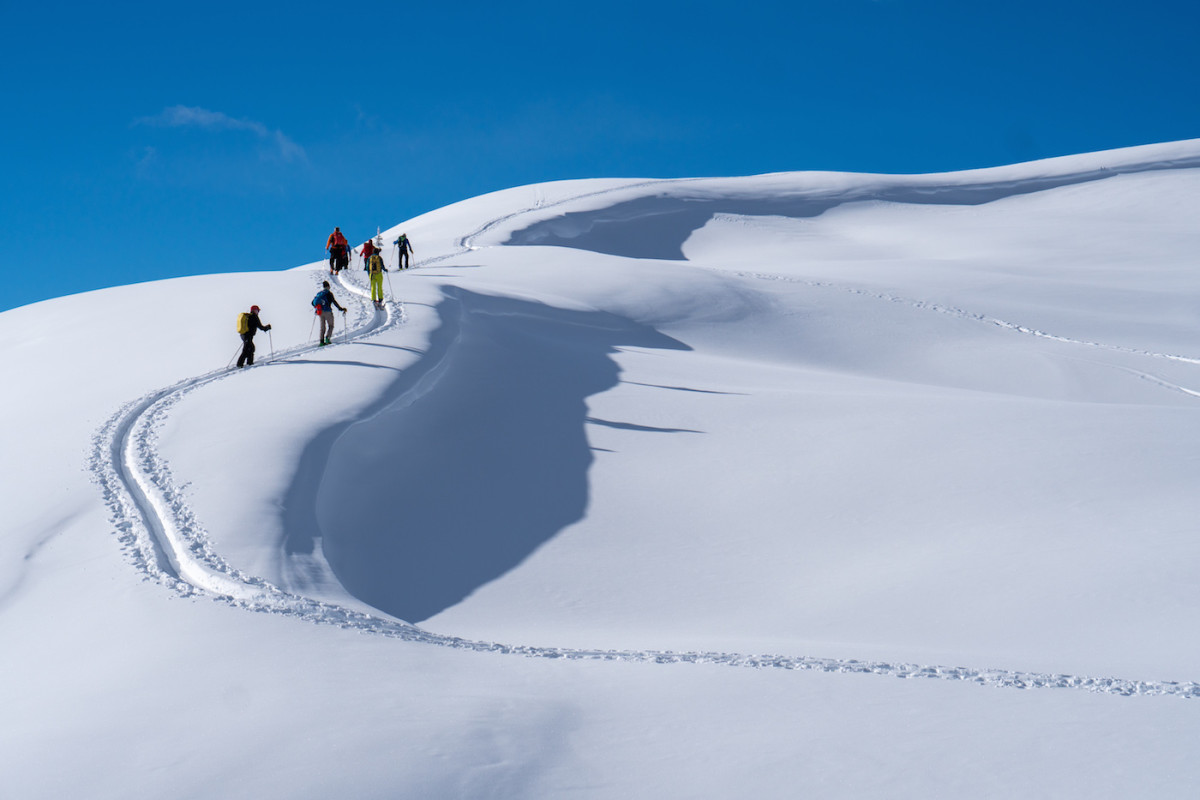Instead of traveling across the world to ski the midnight sun or popping bottles on the slopes, people are (and should be) staying closer to home. But that doesn’t mean you can’t find new ways to play in fresh pow this season. Snowshoe running has so far been a pretty niche sport (although there is a National Championship race sponsored by the United States Snowshoe Association). But running as a whole has seen a huge surge in popularity during a year when access to gym and studio workouts has been so limited. Snowshoe running allows people to keep up that hobby even when road conditions aren’t ideal. Even better: “It builds leg strength and cardiovascular fitness in a way that road running does not,” says Sarah Canney, a Vermont-based running coach and competitive snowshoe racer.
But the real appeal is that snowshoe running allows you to unplug and escape into the wilderness for a mindful experience, says Joseph Mutter, a Colorado-based competitive snowshoe racer—while covering more ground than you would on a hike.
Looking for a new way to get out in the snow? Here’s what you need to know before strapping on a pair of running snowshoes.
1. Invest in the Right Kind of Snowshoes
When you’re attaching something to your feet, you want to make sure they’re A) comfortable and B) working for you, not against you. There are a ton of snowshoes on the market right now, but if you’re interested in snowshoe running, definitely opt for ones specifically designed for that sport. “They tend to have a smaller profile and basket, which means they kick up less snow (which means you get less wet),” says Mutter. Canny recommends anything with a light aluminum frame and cleats that can withstand ice (i.e. nothing plastic). She prefers Dion Snowshoes, the sponsor of the USSSA National Championships, but brands like TSL and Atlas also have running snowshoes. The standard size is 20 inches long by seven inches wide.
2. Layer Up
“Dressing appropriately will make or break your snowshoe running experience,” says Canney. Obviously, everyone’s different when it comes to how cold they get in certain conditions and how much of a sweat they work up when exercising in the cold. Canney recommends dressing as if you’re going out for a really hard run in cold weather. “Typically, that means tights and a thermal top,” she says. “Then, I’d recommend wearing a running vest—not a jacket, which might make you overheat—and a pair of shorts over your tights to cut down on how wet you get from the snowshoes kicking up snow onto your backside.” Opt for something waterproof or water-resistant that the snow can slide right off of so you stay dry and warm.
3. Perfect Your Technique
Because of the size and shape of the snowshoes, you’ll likely adopt a slightly wider stance than you would running on the road. “A lot of times when people strap on snowshoes, they think a lot about the snowshoe itself—the width and how funny it feels,” says Canney. “Just focus on the placement of your foot, and rolling to the ball of your foot the same way you would on the road. That will help you adopt a more natural stride.” On an uphill, the shorter your stride, the better, says Mutter. “Snow is going to slip out from underneath you no matter what, so you want to take smaller steps that allow your crampons to really get traction,” he explains. On a downhill, imagine floating or dancing down the trail. “You want to be gentle and elegant because at any moment, you could snag your snowshoes on a hidden rock, branch, or root system.” (Falling, for what it’s worth, is generally fun in the snow, Mutter adds.)
4. Forget About Pace
“You have to go into snowshoe running with the understanding that you’re going to go slow, no matter what,” says Mutter. Comparing your pace on a snowy trail to your pace on the road is like comparing apples and oranges: The added resistance of the snow makes it much more challenging, and how fast you can go is really dependent on the conditions. Breaking trail through deep powder, running on wet and soft snow, and navigating icier conditions are all going to slow you down significantly, whereas a groomed Nordic trail or hard-packed snow will be easier to get your footing on, says Canney. “Beginners should start on more packed or groomed trails; once you’ve become more familiar with the sport, then you can get out and blaze your own trail through the woods in or in the mountains,” she adds.
5. Stay in the Moment
“Snowshoe running forces you to maintain a level of focus you wouldn’t otherwise experience in running,” says Mutter. Not only can your feet slip out from under you at any moment, but you’re also subject to changing weather elements and unfamiliar territory (who knows what’s under that snow?)—all of which can increase your risk of injury if you’re not engaged with your surroundings. There’s a benefit in that, too: “Because you’re forced to slow down, snowshoe running gives you an opportunity to develop and cultivate a level of awareness that’s extremely deep and intimate,” says Mutter. “It requires a level of mindfulness that I really love.”
from Men's Journal https://ift.tt/3neFPNe



No comments:
Post a Comment